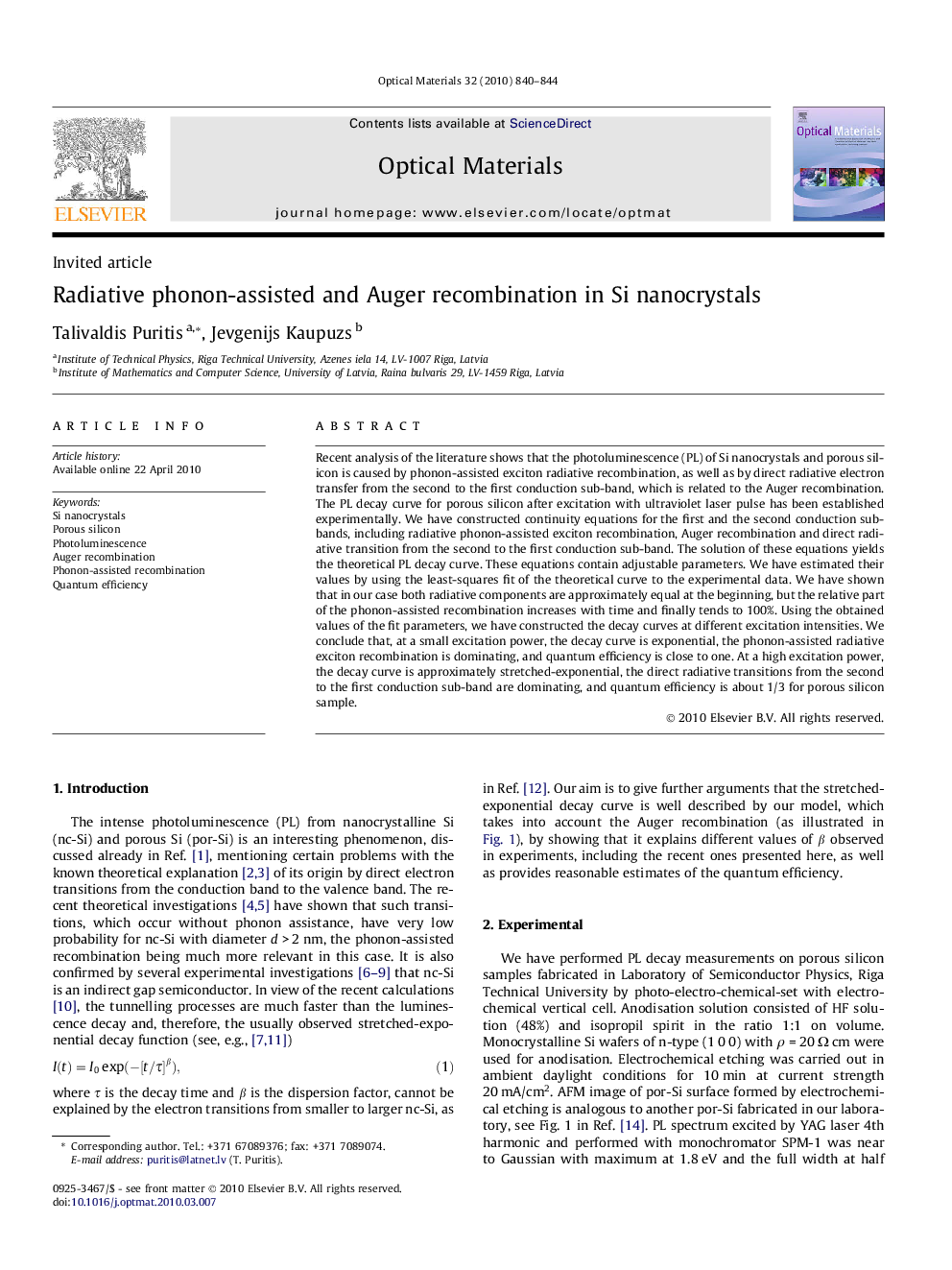| Article ID | Journal | Published Year | Pages | File Type |
|---|---|---|---|---|
| 1496596 | Optical Materials | 2010 | 5 Pages |
Abstract
Recent analysis of the literature shows that the photoluminescence (PL) of Si nanocrystals and porous silicon is caused by phonon-assisted exciton radiative recombination, as well as by direct radiative electron transfer from the second to the first conduction sub-band, which is related to the Auger recombination. The PL decay curve for porous silicon after excitation with ultraviolet laser pulse has been established experimentally. We have constructed continuity equations for the first and the second conduction sub-bands, including radiative phonon-assisted exciton recombination, Auger recombination and direct radiative transition from the second to the first conduction sub-band. The solution of these equations yields the theoretical PL decay curve. These equations contain adjustable parameters. We have estimated their values by using the least-squares fit of the theoretical curve to the experimental data. We have shown that in our case both radiative components are approximately equal at the beginning, but the relative part of the phonon-assisted recombination increases with time and finally tends to 100%. Using the obtained values of the fit parameters, we have constructed the decay curves at different excitation intensities. We conclude that, at a small excitation power, the decay curve is exponential, the phonon-assisted radiative exciton recombination is dominating, and quantum efficiency is close to one. At a high excitation power, the decay curve is approximately stretched-exponential, the direct radiative transitions from the second to the first conduction sub-band are dominating, and quantum efficiency is about 1/3 for porous silicon sample.
Related Topics
Physical Sciences and Engineering
Materials Science
Ceramics and Composites
Authors
Talivaldis Puritis, Jevgenijs Kaupuzs,
